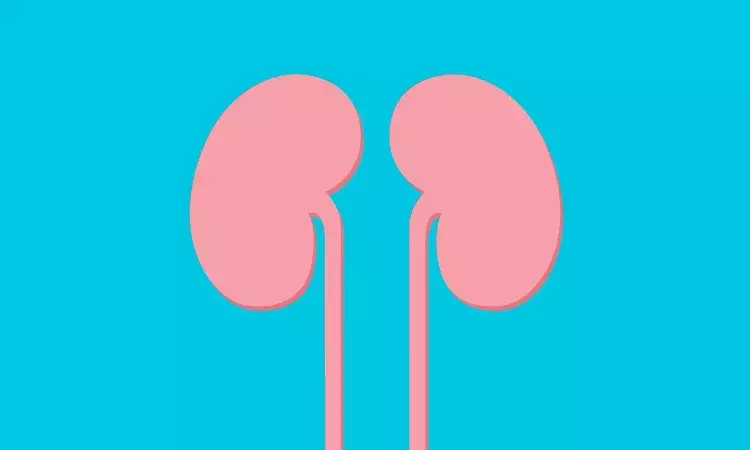- Home
- Medical news & Guidelines
- Anesthesiology
- Cardiology and CTVS
- Critical Care
- Dentistry
- Dermatology
- Diabetes and Endocrinology
- ENT
- Gastroenterology
- Medicine
- Nephrology
- Neurology
- Obstretics-Gynaecology
- Oncology
- Ophthalmology
- Orthopaedics
- Pediatrics-Neonatology
- Psychiatry
- Pulmonology
- Radiology
- Surgery
- Urology
- Laboratory Medicine
- Diet
- Nursing
- Paramedical
- Physiotherapy
- Health news
- Fact Check
- Bone Health Fact Check
- Brain Health Fact Check
- Cancer Related Fact Check
- Child Care Fact Check
- Dental and oral health fact check
- Diabetes and metabolic health fact check
- Diet and Nutrition Fact Check
- Eye and ENT Care Fact Check
- Fitness fact check
- Gut health fact check
- Heart health fact check
- Kidney health fact check
- Medical education fact check
- Men's health fact check
- Respiratory fact check
- Skin and hair care fact check
- Vaccine and Immunization fact check
- Women's health fact check
- AYUSH
- State News
- Andaman and Nicobar Islands
- Andhra Pradesh
- Arunachal Pradesh
- Assam
- Bihar
- Chandigarh
- Chattisgarh
- Dadra and Nagar Haveli
- Daman and Diu
- Delhi
- Goa
- Gujarat
- Haryana
- Himachal Pradesh
- Jammu & Kashmir
- Jharkhand
- Karnataka
- Kerala
- Ladakh
- Lakshadweep
- Madhya Pradesh
- Maharashtra
- Manipur
- Meghalaya
- Mizoram
- Nagaland
- Odisha
- Puducherry
- Punjab
- Rajasthan
- Sikkim
- Tamil Nadu
- Telangana
- Tripura
- Uttar Pradesh
- Uttrakhand
- West Bengal
- Medical Education
- Industry
A nomogram useful for screening atherosclerosis in CKD patients without dialysis: Study

A nomogram is beneficial and might be instrumental for detecting subclinical atherosclerosis in patients with CKD without dialysis, suggests a study published in the Clinical interventions of aging.
Atherosclerosis is a disease in which plaque builds up inside your arteries. Plaque is made up of fat, cholesterol, calcium, and other substances found in the blood. Over time, plaque hardens and narrows your arteries. This limits the flow of oxygen-rich blood to your organs and other parts of your body.
Chronic kidney disease is often linked with an increase in atherosclerotic risk, right from the early stages. As chronic kidney disease progresses, so does the risk for atherosclerosis. It is one of the main causes of mortality in these patients. And there is no prediction model developed to screen subclinical atherosclerosis in Chronic Kidney Disease patients.
A study was conducted by a group of Chinese researchers, to generate and validate a nomogram for detecting subclinical atherosclerosis among CKD patients without dialysis.
The researchers selected a total of 1452 CKD stage 1‒5 for this cross-sectional study. Out of which subclinical atherosclerosis was diagnosed with carotid ultrasonography in all and was confirmed in a total of 669 patients (46.1%). All the patients were divided into the training set and validation set. The risk factors of atherosclerosis were recognized by the training set and confirmed by the validation set.
The receiver operating characteristic (ROC) curves and decision curve analyses (DCA) were carried out to assess the accuracy of fitted logistic models in training and validation sets.
Finally, a nomogram based on constructed the logistic regression model in all participants was plotted.
The findings of the study are as follows:
Males, age, hypertension, diabetes, CKD stages, calcium, platelet, and albumin were identified as risk factors for atherosclerosis by binary logistic regression analysis.
The accuracy of fitted logistic models was assessed by the area under the ROC curve (AUC), which showed good predictive accuracy in the training set and validation set.
A high net benefit was also proven by the DCA. Finally, these predictors were all included to develop the nomogram.
The researchers concluded that this proposed nomogram is a reliable tool to detect subclinical atherosclerosis in patients with Chronic Kidney Disease.
Reference:
A study titled, "A Nomogram for Identifying Subclinical Atherosclerosis in Chronic Kidney Disease" by Xiong J et. al published in the Clinical interventions of aging.
DOI https://doi.org/10.2147/CIA.S312129
Dr. Shravani Dali has completed her BDS from Pravara institute of medical sciences, loni. Following which she extensively worked in the healthcare sector for 2+ years. She has been actively involved in writing blogs in field of health and wellness. Currently she is pursuing her Masters of public health-health administration from Tata institute of social sciences. She can be contacted at editorial@medicaldialogues.in.
Dr Kamal Kant Kohli-MBBS, DTCD- a chest specialist with more than 30 years of practice and a flair for writing clinical articles, Dr Kamal Kant Kohli joined Medical Dialogues as a Chief Editor of Medical News. Besides writing articles, as an editor, he proofreads and verifies all the medical content published on Medical Dialogues including those coming from journals, studies,medical conferences,guidelines etc. Email: drkohli@medicaldialogues.in. Contact no. 011-43720751


